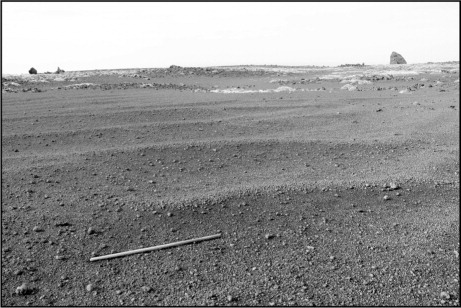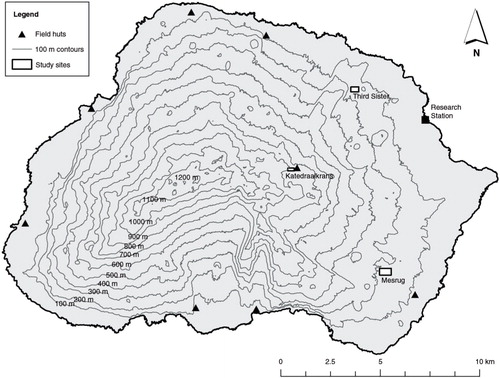Figures & data
Fig. 2 A comparison of the particle size distribution of (a) the aeolian megaripples at Mesrug and the modified solifluction terraces at (b) Katedraalkrans and (c) Third Sister. Note the higher percentage of course material in the crest of the Mesrug megaripples with the risers of the solifluction terraces at Katedraalkrans and Third Sister.

Table 1 Summary of the particle size analysis of the sediment of the landforms surveyed at each study site.
Fig. 3 Cross profile of average landform morphology. Arrows indicate the predominant wind direction over the crest of the landforms.

Fig. 4 Megaripple landforms at the study site near Mesrug, Marion Island. The staff is 1.2 m long (photograph taken on 20 April 2013).

Table 2 Wind characteristics and aeolian sediment flux for the study sites during the study period in 2013. Traps mounted at 0.05 m above the surface.
Table 3 Surface sediment creep/saltation collected at the study sites during the study period. The samplers were installed level with the surface.

